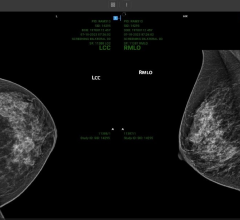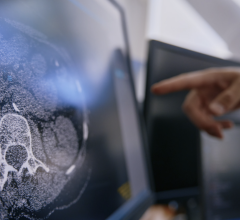As computed tomography (CT) technology has become more versatile, affordable and available, the number of exams being done continues to rise. Physicians increasingly rely on CT studies to diagnose and manage disease. This trend is expected to increase as the baby boomer generation ages and requires more care. According to the American Hospital Association (AHA), by 2020, boomers will account for four in 10 office visits to physicians. New imaging techniques will improve the quality of many boomers’ lives, allowing them new opportunities. The bottom line is that exposing patients to radiation during a CT scan may be hazardous to their health, therefore embroiling the modality in controversy. This month, several CT experts weigh in on the debate surrounding CT X-ray dosage and how technologies developed by their companies can help physicians curb patient exposure. Do you believe evidence supports the need to reduce CT radiation dose for patient safety or is this new push merely cautionary? Donald Barry, Ph.D, MBA, X-ray general manager, ContextVision Inc., Stockholm, Sweden: What is important is that the public believes the radiation dose is too high, hence patient and physician safety are being imperiled by today’s imaging techniques and procedures. It is incumbent upon all of us to restore the public trust and understanding about how critical diagnostic imaging procedures are and the positive results that stem from them. The news stories about needless patient overexposure has brought this issue to the forefront, and we all need to take advantage of this opportunity to self-govern radiation dose, both in individual exams and cumulatively over the lifetime of the patient. Mike Harsh, VP and CTO, GE Healthcare, Chalfont St. Giles, United Kingdom: When used appropriately, CT and fluoroscopic exams significantly improve diagnostic capabilities and the care provided for life-threatening conditions, such as cancer, heart disease, brain disorders and cardiovascular conditions. GE Healthcare supports the utilization of CT and fluoroscopy scans only when deemed medically necessary by qualified physicians, where the exam follows the ALARA (as low as reasonably achievable) principle of responsible dose management. GE Healthcare already manufactures hardware and software features to aid users in reducing unnecessary exposure to radiation during each imaging exam. For example, a few years ago, GE introduced adaptive statistical iterative reconstruction (ASIR) on several products within the company’s CT portfolio, allowing for a demonstrated dose reduction of up to 50 percent in certain clinical areas. This dramatic dose reduction technique can improve care to patients by reducing radiation exposure without compromising the diagnostic image quality. Andre Hartung, VP, global marketing and sales, computed tomography, Siemens Healthcare, Forchheim, Germany: Siemens has always been committed to the ALARA principle. Therefore, besides providing technology that enables the users to limit the dose to the absolute minimum, Siemens supports activities that also concentrate on appropriateness, training, reference values for dose and image quality and scientific validation of dose reduction methods. Robb Young, acting director, CT business unit, Toshiba America Medical Systems Inc., Tustin, Calif.: Since the development of its first CT system, Toshiba has always been committed to providing the best image quality at the lowest possible dose. Last year, Toshiba developed the new One Beat Prospective Reconstruction, which shortens the interval window and reduces radiation exposure time. This enhancement alone reduces radiation dose by 21 percent over the previous software. How has your company helped to calculate appropriate radiation dose and monitored it in the past? What new steps are you taking? Barry: Our forte is the removal of noise from images along with the enhancement of edges and contrast. The act of dose-lowering leads to more noisy images, and hence, makes diagnosis of subtle and not-so-subtle pathology more difficult. Our software enables 40-50 percent dose reduction in both CT and interventional radiology, while still maintaining diagnostic imaging quality. Results can be achieved in real time without any temporal blurring. Harsh: For more than a decade, GE has provided standardized dose indices, such as CTDIvol and DLP, for scans completed on our CT systems. These dose indices provide an estimate for dose levels that have been administered to patients. Health care providers can then use accepted methods to compare patient dose levels using tools, such as the dose wheels, which are available to users. Since 2008, GE Healthcare has supported exporting this data to information systems using the industry-standard digital imaging and communications in medicine (DICOM) dose structured report. Our fluoroscopic devices employ automatic exposure control, exposure rate limits, and audible and visual indications and alarms. In the future, GE will pursue industry standardization, enhanced user-access controls as well as standardized dose reporting for CT and fluoroscopic devices where compatible. Hartung: For years, dose information has been displayed at the scanner console before the scan. A detailed dose report is provided after the scan as a DICOM image that can be distributed and sent to the picture archive and communication system (PACS). Siemens provides detailed dose information as structured DICOM dose reports that enable the user to automatically send and evaluate dose information everywhere. This will play a critical role in setting up new quality assurance processes to closely monitor dose and optimize scan protocols. Young: Toshiba provides dose summaries with every patient study and provides education to customers on how to monitor and review this information. For the future, Toshiba is working on a new Integrating the Healthcare Enterprise (IHE) dose profile that is a DICOM-structured report, which is standardized for the industry. What special precautions are you taking for children? Barry: In pediatric imaging centers, we work hard with the radiologists to tune our software for the minimum acceptable dosage, while still achieving acceptable image quality. Harsh: In 1994, GE Healthcare introduced pediatric-specific protocols on its CT scanners, and in 2001, the company introduced Color Coding for Kids, protocols based on the Broselow-Luten system. We have been an active supporter of the Image Gently campaign since its inception. Additionally, features such as automatic exposure control are designed to minimize the dose to achieve the requested image quality based on the patient size and attenuation. Hartung: For more than 10 years, Siemens has been providing dedicated scan protocols for children that take into account the latest scientific data and best practices, such as the use of low kilovolts. Even if, accidentally, pediatric protocols are not used, Siemens’ unique automatic exposure control CARE Dose 4D prevents excessive radiation from being applied. Young: The Aquilion One features Toshiba’s SureExposure Pediatric software, which automatically takes inputs on the size and age of each patient and tailors radiation dose to achieve the best and safest image quality for each exam. The software uses protocols based on the patient’s age, size and type of exam to ensure patients receive only the radiation required to obtain a clear diagnostic image. The Aquilion One can image a patient in 0.35 seconds, so less patient sedation is required since pediatric patients can move during an exam without comprising image quality. The Medical Imaging Technology Alliance (MITA) is backing a new Dose Check feature that alerts CT operators if predetermined dose levels have been exceeded. How effective will that feature be in keeping radiation exposure within acceptable levels? Barry: Any automated feature that can alert a radiologist or a technologist that the dose is getting too high is a good thing. In looking over the MITA suggestions, including the ones dealing with training, standardizing accreditation, monitoring cumulative radiation and adding more oversight to the diagnostic imaging field, I would support them. Harsh: We are confident a Dose Check feature will help users manage radiation exposure within acceptable levels. As part of MITA, GE is supporting the development of reference levels by medical professional groups, such as the American College of Radiology (ACR). These [initiatives] have the potential to make a significant impact. Hartung: Siemens has played and will continue to play an active role in this important MITA initiative. We already have implemented a dose notification for the user if a reasonable dose level is dramatically exceeded. The even more effective implementation of such a feature requires the establishment of consistent reference dose values and image quality standards that today only exist for a very limited amount of applications. We will continue to work with our customers, the radiological community and the regulating bodies to move this topic forward. Young: Toshiba supports and is participating in MITA’s efforts to help the industry address dose. These efforts will greatly enhance awareness in hospitals for clinical users to evaluate their protocols on an ongoing basis. Reference: “Baby Boomers to Challenge and Change Tomorrow’s Health Care System”. www.aha.org/aha/press-release/2007/070508-pr-boomers.html Authors: Jeanne-Marie Phillips is president, HealthFlash Marketing Communications, a public relations firm specializing in health care. Contact: [email protected], www.healthflashmarketing.com, 203.977.5555. Steven Washer is executive produce, MedView Media LLC, Contact: 860.687.9849, www.medviewmedia.com.
If you enjoy this content, please share it with a colleague
As physicians increasingly rely on CT to diagnose disease, how can they curb radiation exposure?
Related Content
April 23, 2024 — A diverse writing group—lead by authors at the University of Toronto—have developed an approach for ...
April 16, 2024 — QT Imaging Holdings, Inc., a medical device company engaged in research, development, and ...
April 12, 2024 — Bayer and Hologic, Inc. announced a first-of-its-kind collaboration to deliver a coordinated solution ...
April 12, 2024 — GE HealthCare, a leader in breast health technology and diagnostics, will feature its latest breast ...
March 28, 2024 — RefleXion Medical, Inc., a therapeutic oncology company, and Limbus AI, Inc., a provider of software ...
March 18, 2024 — RamSoft, a global leader in novel cloud-based RIS/PACS radiology solutions for imaging centers and ...
March 18, 2024 — QT Imaging Holdings, Inc., a medical device company engaged in research, development, and ...
March 5, 2024 — Life Guard Imaging, a pioneering leader in preventative imaging services, is thrilled to announce its ...
February 29, 2024 — AIxSCAN, Inc., a Sunnyvale, CA-based developer of a next generation artificial intelligence (AI) ...
February 27, 2024 — Median Technologies announced that the Company will be participating and speaking at the premier ...


 April 23, 2024
April 23, 2024 








